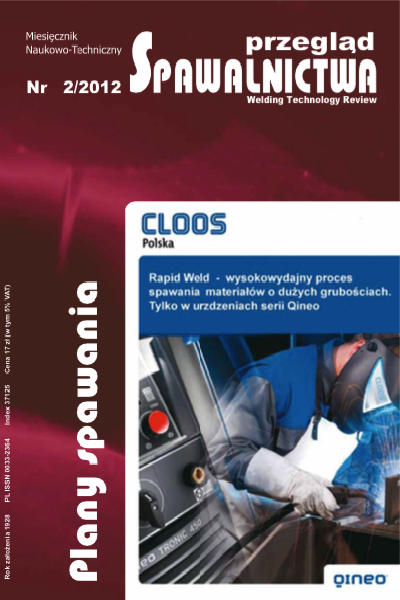Spawanie blach dla przemysłu motoryzacyjnego metodą MAG ze zmienną biegunowością (AC Pulse)
Main Article Content
Abstract
W artykule przedstawiono analizę warunków technologicznych spawania materiałów konstrukcyjnych nową, innowacyjną metodą. omówiono badania technologiczne wariantu spawania AC MIG PULSE, opracowanego przez japońską firmę OTC Daihen i określono właściwości uzyskanych połączeń oraz ich zastosowanie do łączenia cienkich blach stalowych z nowoczesnymi powłokami w przemyśle samochodowym.
Welding of automotive steels using Mag method with variable polarity (AC Pulse)
Abstract
The analysis of technological conditions of welding of zinc-coated plate using modern, innovative technique has been presented. Technological investigation of AC MIG PULSE welding technique, developed by Japanese company oTC Daihen has been carried out (MAG welding using variable polarity). The properties of welded joints has been presented and possibilities of application of this method in automotive industry has also been discussed.
Downloads
Article Details
Creative Commons CC BY 4.0 https://creativecommons.org/licenses/by/4.0/
Welding Technology Review (WTR) articles are published open access under a CC BY licence (Creative Commons Attribution 4.0 International licence). The CC BY licence is the most open licence available and considered the industry 'gold standard' for open access; it is also preferred by many funders. This licence allows readers to copy and redistribute the material in any medium or format, and to alter, transform, or build upon the material, including for commercial use, providing the original author is credited.
References
Matusiak J., Pfeifer T., Wyciślik J. , Kiszka A.: Analiza wpływu warunków technologicznych innowacyjnych technik spajania różnych materiałów konstrukcyjnych z nowoczesnymi powło- kami ochronnymi na stan środowiska pracy. Praca badawcza Instytutu Spawalnictwa nr Ma-34, Gliwice 2011.
Szubert L., Skoczewski P., Welcel M.: System rejestracji parametrów elektrycznych procesu spawania dla wielu stanowisk produkcyjnych. Praca badawcza Instytutu Spawalnictwa nr Fc-89, Gliwice 2010.
